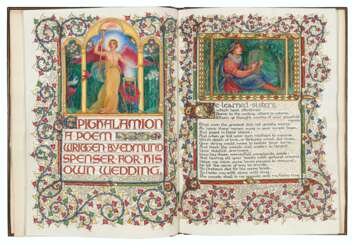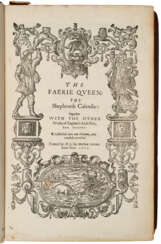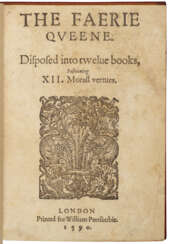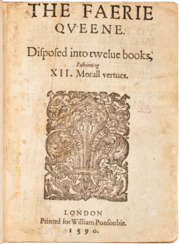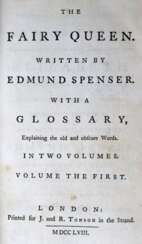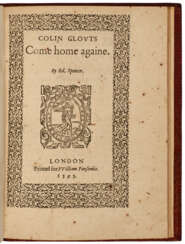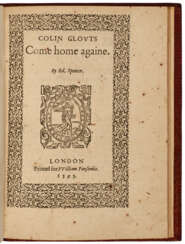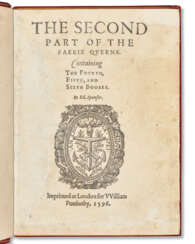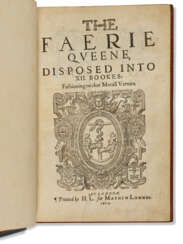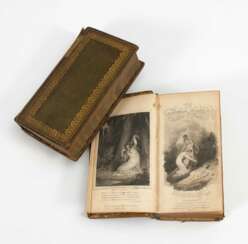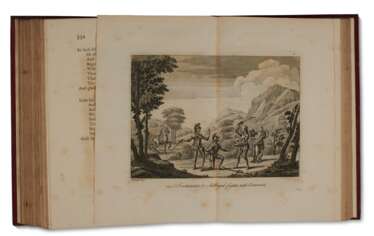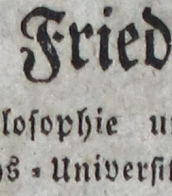edmund spenser (1552 - 1599)

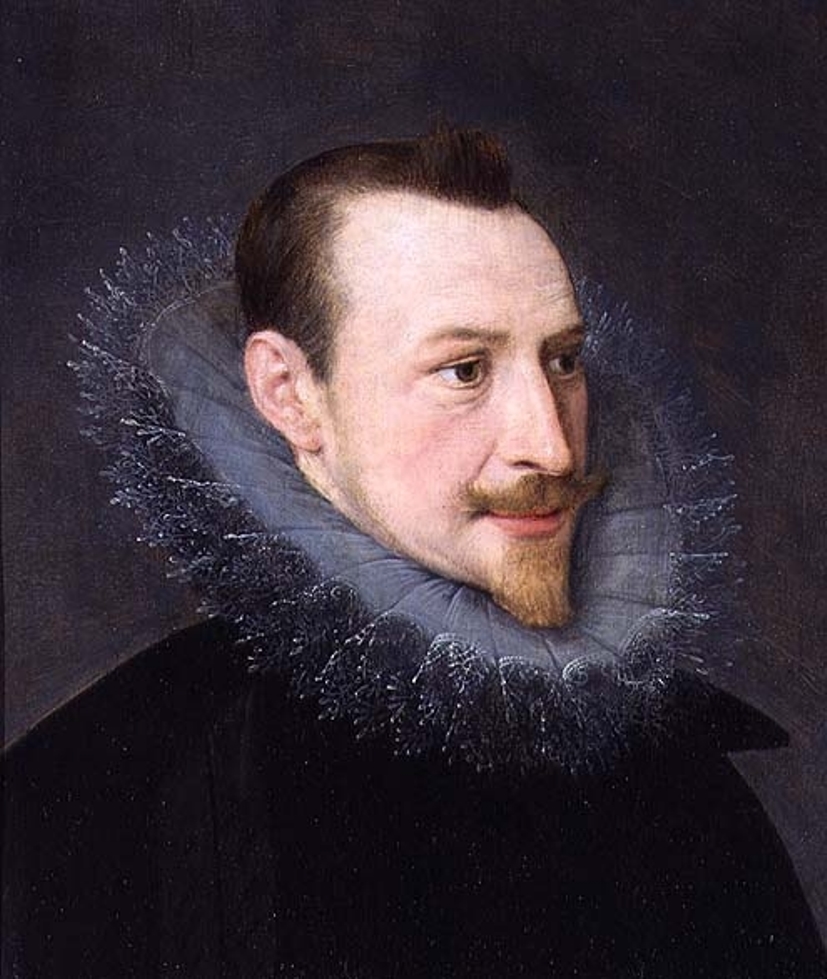
Edmund Spenser was an English poet of the Queen Elizabethan era.
Spenser studied Latin and Greek, as well as literature and religion, at Pembroke Hall, Cambridge University. In 1579 he published his first poetry collection, Shepherd's Calends. He is also the author of a major English epic, The Fairy Queen (1596), a fantastic allegory celebrating the Tudor dynasty and Elizabeth I, and the sonnet cycle Amoretti and Epithalamion (1595).
Alongside his poetry, Spenser pursued a political career, serving as secretary first to the Bishop of Rochester and then to the Earl of Leicester, who introduced him to other poets and artists at Queen Elizabeth's court. In 1580 he was appointed secretary to the Lord Viceroy of Ireland, and later wrote a pamphlet, A View of the Present State of Ireland.
In 1598, during the Nine Years' War, Spenser was banished from his home in Ireland, died in London in 1599, and was buried in Poets' Corner in Westminster Abbey.
Edmund Spenser's poems were characterized by outstanding craftsmanship and lyrical beauty, a style later called the Spenserian stanza. Today his work is widely studied as one of the main representatives of the English literary Renaissance.


Edmund Spenser was an English poet of the Queen Elizabethan era.
Spenser studied Latin and Greek, as well as literature and religion, at Pembroke Hall, Cambridge University. In 1579 he published his first poetry collection, Shepherd's Calends. He is also the author of a major English epic, The Fairy Queen (1596), a fantastic allegory celebrating the Tudor dynasty and Elizabeth I, and the sonnet cycle Amoretti and Epithalamion (1595).
Alongside his poetry, Spenser pursued a political career, serving as secretary first to the Bishop of Rochester and then to the Earl of Leicester, who introduced him to other poets and artists at Queen Elizabeth's court. In 1580 he was appointed secretary to the Lord Viceroy of Ireland, and later wrote a pamphlet, A View of the Present State of Ireland.
In 1598, during the Nine Years' War, Spenser was banished from his home in Ireland, died in London in 1599, and was buried in Poets' Corner in Westminster Abbey.
Edmund Spenser's poems were characterized by outstanding craftsmanship and lyrical beauty, a style later called the Spenserian stanza. Today his work is widely studied as one of the main representatives of the English literary Renaissance.


Edmund Spenser was an English poet of the Queen Elizabethan era.
Spenser studied Latin and Greek, as well as literature and religion, at Pembroke Hall, Cambridge University. In 1579 he published his first poetry collection, Shepherd's Calends. He is also the author of a major English epic, The Fairy Queen (1596), a fantastic allegory celebrating the Tudor dynasty and Elizabeth I, and the sonnet cycle Amoretti and Epithalamion (1595).
Alongside his poetry, Spenser pursued a political career, serving as secretary first to the Bishop of Rochester and then to the Earl of Leicester, who introduced him to other poets and artists at Queen Elizabeth's court. In 1580 he was appointed secretary to the Lord Viceroy of Ireland, and later wrote a pamphlet, A View of the Present State of Ireland.
In 1598, during the Nine Years' War, Spenser was banished from his home in Ireland, died in London in 1599, and was buried in Poets' Corner in Westminster Abbey.
Edmund Spenser's poems were characterized by outstanding craftsmanship and lyrical beauty, a style later called the Spenserian stanza. Today his work is widely studied as one of the main representatives of the English literary Renaissance.


Edmund Spenser was an English poet of the Queen Elizabethan era.
Spenser studied Latin and Greek, as well as literature and religion, at Pembroke Hall, Cambridge University. In 1579 he published his first poetry collection, Shepherd's Calends. He is also the author of a major English epic, The Fairy Queen (1596), a fantastic allegory celebrating the Tudor dynasty and Elizabeth I, and the sonnet cycle Amoretti and Epithalamion (1595).
Alongside his poetry, Spenser pursued a political career, serving as secretary first to the Bishop of Rochester and then to the Earl of Leicester, who introduced him to other poets and artists at Queen Elizabeth's court. In 1580 he was appointed secretary to the Lord Viceroy of Ireland, and later wrote a pamphlet, A View of the Present State of Ireland.
In 1598, during the Nine Years' War, Spenser was banished from his home in Ireland, died in London in 1599, and was buried in Poets' Corner in Westminster Abbey.
Edmund Spenser's poems were characterized by outstanding craftsmanship and lyrical beauty, a style later called the Spenserian stanza. Today his work is widely studied as one of the main representatives of the English literary Renaissance.


Edmund Spenser was an English poet of the Queen Elizabethan era.
Spenser studied Latin and Greek, as well as literature and religion, at Pembroke Hall, Cambridge University. In 1579 he published his first poetry collection, Shepherd's Calends. He is also the author of a major English epic, The Fairy Queen (1596), a fantastic allegory celebrating the Tudor dynasty and Elizabeth I, and the sonnet cycle Amoretti and Epithalamion (1595).
Alongside his poetry, Spenser pursued a political career, serving as secretary first to the Bishop of Rochester and then to the Earl of Leicester, who introduced him to other poets and artists at Queen Elizabeth's court. In 1580 he was appointed secretary to the Lord Viceroy of Ireland, and later wrote a pamphlet, A View of the Present State of Ireland.
In 1598, during the Nine Years' War, Spenser was banished from his home in Ireland, died in London in 1599, and was buried in Poets' Corner in Westminster Abbey.
Edmund Spenser's poems were characterized by outstanding craftsmanship and lyrical beauty, a style later called the Spenserian stanza. Today his work is widely studied as one of the main representatives of the English literary Renaissance.


Edmund Spenser was an English poet of the Queen Elizabethan era.
Spenser studied Latin and Greek, as well as literature and religion, at Pembroke Hall, Cambridge University. In 1579 he published his first poetry collection, Shepherd's Calends. He is also the author of a major English epic, The Fairy Queen (1596), a fantastic allegory celebrating the Tudor dynasty and Elizabeth I, and the sonnet cycle Amoretti and Epithalamion (1595).
Alongside his poetry, Spenser pursued a political career, serving as secretary first to the Bishop of Rochester and then to the Earl of Leicester, who introduced him to other poets and artists at Queen Elizabeth's court. In 1580 he was appointed secretary to the Lord Viceroy of Ireland, and later wrote a pamphlet, A View of the Present State of Ireland.
In 1598, during the Nine Years' War, Spenser was banished from his home in Ireland, died in London in 1599, and was buried in Poets' Corner in Westminster Abbey.
Edmund Spenser's poems were characterized by outstanding craftsmanship and lyrical beauty, a style later called the Spenserian stanza. Today his work is widely studied as one of the main representatives of the English literary Renaissance.


Edmund Spenser was an English poet of the Queen Elizabethan era.
Spenser studied Latin and Greek, as well as literature and religion, at Pembroke Hall, Cambridge University. In 1579 he published his first poetry collection, Shepherd's Calends. He is also the author of a major English epic, The Fairy Queen (1596), a fantastic allegory celebrating the Tudor dynasty and Elizabeth I, and the sonnet cycle Amoretti and Epithalamion (1595).
Alongside his poetry, Spenser pursued a political career, serving as secretary first to the Bishop of Rochester and then to the Earl of Leicester, who introduced him to other poets and artists at Queen Elizabeth's court. In 1580 he was appointed secretary to the Lord Viceroy of Ireland, and later wrote a pamphlet, A View of the Present State of Ireland.
In 1598, during the Nine Years' War, Spenser was banished from his home in Ireland, died in London in 1599, and was buried in Poets' Corner in Westminster Abbey.
Edmund Spenser's poems were characterized by outstanding craftsmanship and lyrical beauty, a style later called the Spenserian stanza. Today his work is widely studied as one of the main representatives of the English literary Renaissance.


Edmund Spenser was an English poet of the Queen Elizabethan era.
Spenser studied Latin and Greek, as well as literature and religion, at Pembroke Hall, Cambridge University. In 1579 he published his first poetry collection, Shepherd's Calends. He is also the author of a major English epic, The Fairy Queen (1596), a fantastic allegory celebrating the Tudor dynasty and Elizabeth I, and the sonnet cycle Amoretti and Epithalamion (1595).
Alongside his poetry, Spenser pursued a political career, serving as secretary first to the Bishop of Rochester and then to the Earl of Leicester, who introduced him to other poets and artists at Queen Elizabeth's court. In 1580 he was appointed secretary to the Lord Viceroy of Ireland, and later wrote a pamphlet, A View of the Present State of Ireland.
In 1598, during the Nine Years' War, Spenser was banished from his home in Ireland, died in London in 1599, and was buried in Poets' Corner in Westminster Abbey.
Edmund Spenser's poems were characterized by outstanding craftsmanship and lyrical beauty, a style later called the Spenserian stanza. Today his work is widely studied as one of the main representatives of the English literary Renaissance.

